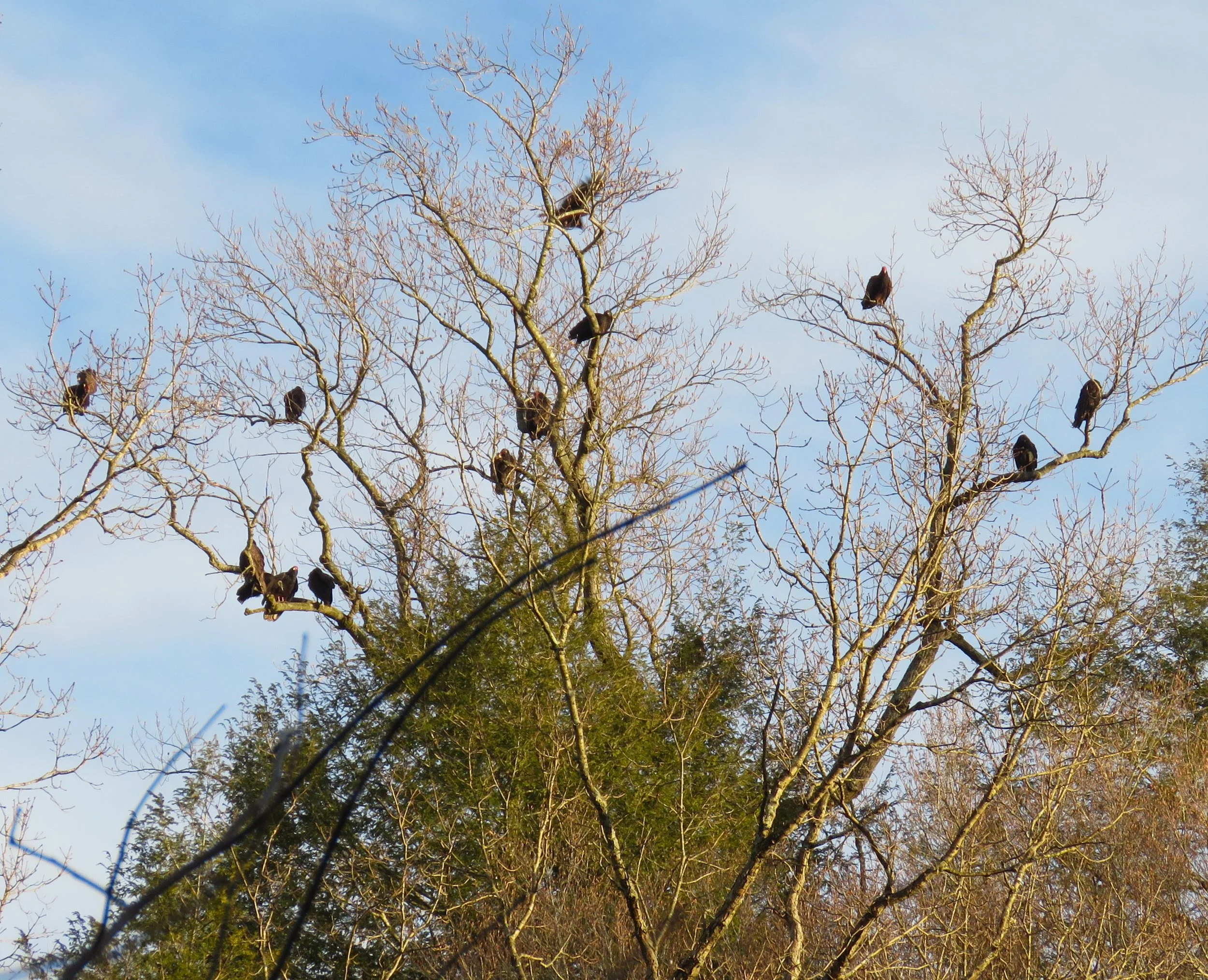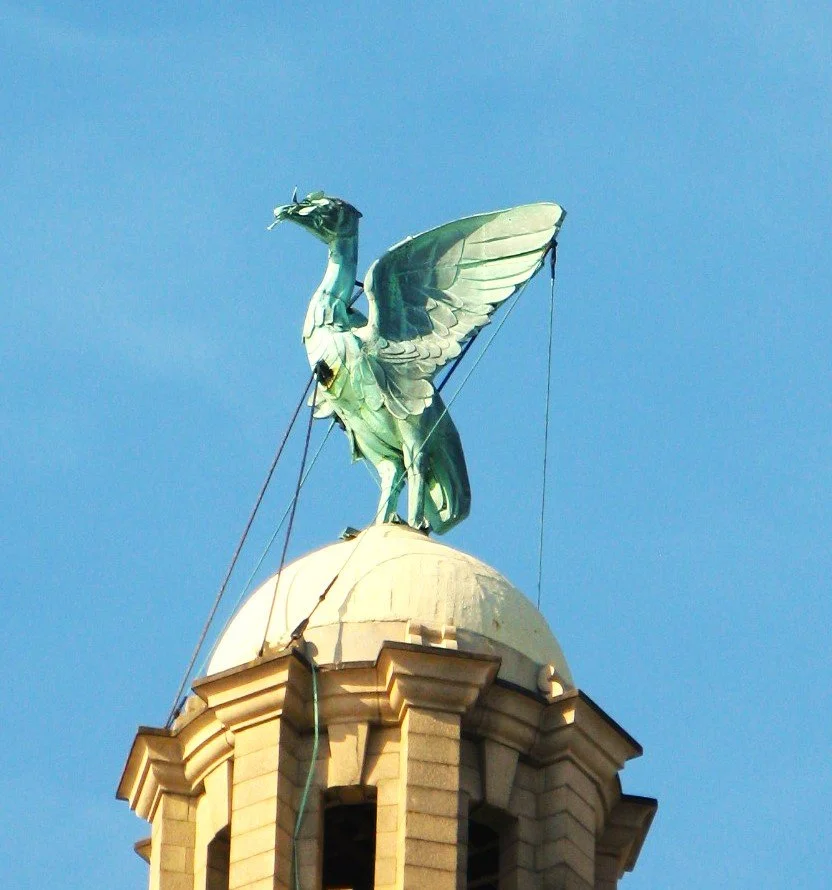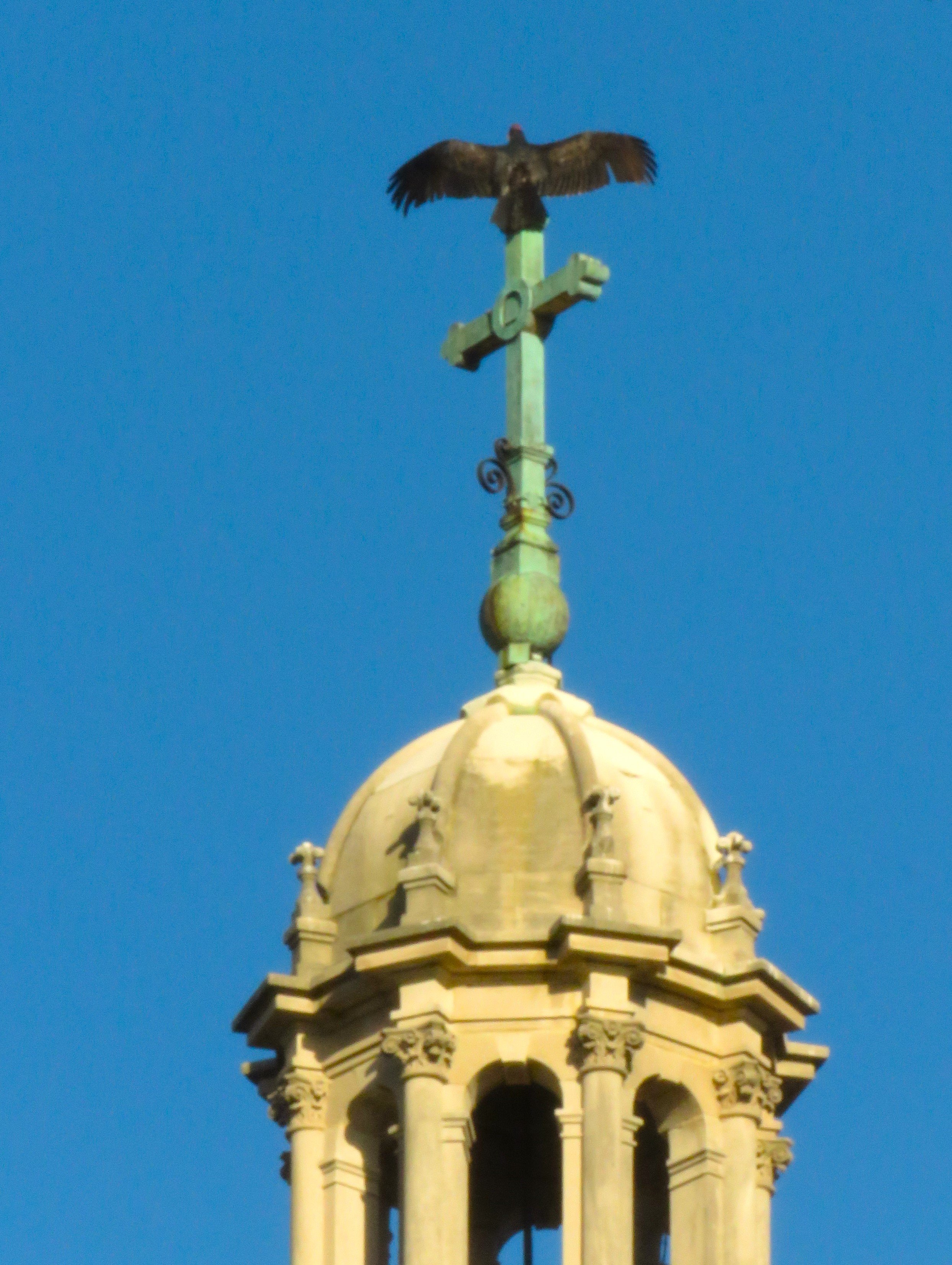Phenological Phacts and Photos w/ Carl Martland / October 2022
Turkey Vultures - or Liver Birds???
Phenology – “a branch of science concerned with the relationship between climate and periodic biological phenomena (as the migration of birds or the flowering and fruiting of plants).”
Turkey Vultures
Thirty or forty years ago, turkey vultures were rare in New England, and I remember being excited the first time I saw one in Massachusetts. My son and I were sitting atop a huge glacial erratic in a scout camp just south of Boston, sometime in the late 1980s. As we enjoyed the views over the forested valleys north of Great Blue Hill, a lone turkey vulture glided not too high overhead. We had seen many turkey vultures in our trips out
west, but this was the first we had seen one so close to home, and we were very pleased to have this unexpected view of such a large bird.
Since then, turkey vultures have steadily expanded northward, no doubt helped by the wide corridors opened up by the Interstate Highway System. Today, they are often seen soaring high over fields or highways with their wings tilted up in what is known to guidebooks and mathematicians as a “dihedral angle.” When you see one circling in the distance or above a thin layer of broken clouds, you watch closely until you see its angled
wings and its typical jerky, side-to-side movements. At that point, you know darn well that it is a turkey vulture, and, if you are like me, you will probably say something like “Damn, not a hawk, just another turkey vulture.” And a little deeper inside you have to admit that you had hoped this large, black bird might even have been an eagle.
1 Photos and text by Carl D. Martland, founding member of ACT, long-time resident of Sugar Hill, and author of Sugar Hill Days: What’s Happening in the Fields, Wetlands, and Forests of a Small New Hampshire Town on the Western Edge of the White Mountain. Quotations from his book and his journals indicate the dates of and the situations depicted in the photos.
If I were restricting this little essay to the North Country, that is about all that I could say and the above photo of a turkey vulture circling pretty low over Toad Hill Road in Sugar Hill would be my best of just a handful of photos of them. However, I haven’t been in Sugar Hill since before Thanksgiving, and out here in Indiana, turkey vultures are much more common and vastly more interesting to watch.
For example, in my experience in the North Country, these birds almost never do anything but soar in wide circles, high overhead, presumably looking for lunch. I may have seen one or two along I93 pecking at road kill – not exactly an everyday experience since I’ve been up and down that road on a regular basis for more than 20 years. And I’ve never seen even one of them roosting in a tree or sitting on a cliff anywhere near New Hampshire.
Coming Home to Roost
Any suspicion I might have had that these birds eat, drink, and sleep as they’re floating with the clouds was dispelled a few years ago when we spent a couple of days at Turkey Run State Park, which is 35 miles north of Terre Haute. During our day trips to this park, we had of course seen numerous turkey vultures, but we were more excited by a sight of a large hawk, an eagle, or a great blue heron flying along the river or over the canyons that make this park such a great place to take a hike. In the summer, even if we stayed at the park for dinner, it was still light before we headed back to Terre Haute. So, when we stayed at the park for a couple of nights in March 2019, that was the first time that we were there as the sun was setting. One evening, as we walked back to the Inn where we would be staying, we looked across a narrow field toward a group of large trees to see a bunch of turkey vultures returning to where they would be staying. A couple dozen were already settled down high in the bare branches, while another dozen or so circled warily around the trees like a bunch of tenth-graders trying to figure out who to sit with and who to avoid in their high school cafeteria.
March 23, 2019, 6:20pm. Dozens of turkey vultures decided to roost right next to where we parked by the Inn in Turkey Run State Park in Indiana.
The vultures were totally unconcerned with us, so I was able to take all the photos I wanted. We were close enough to get good shots of various groups, which included both adults with their typical bare, red heads, and juveniles whose heads were still gray.
March 23, 2019. This a closeup of three of the nearly two dozen turkey vultures roosting by the Inn in Turkey Run State Park. The one in the center is a juvenile, easily identifiable because its head has not yet turned red.
Liver Birds???
Yes, I am now going to explain why this little essay is entitled “Turkey Vultures – or Liver Birds???” Liver Birds (pronounced to rhyme with “diver birds”) were large birds that allegedly inhabited the little bay whose role as a harbor on the Mersey River would provide the economic impetus that made Liverpool one of the major cities of England. If you have ever been to Liverpool, then you have probably heard about these ancient birds and the local belief that Liverpool will survive only as long as the Liver Birds remain. If you walked along the waterfront, you will have seen the Liver Birds sitting atop the towers of one of the majestic buildings facing the river. To be sure, these are statues rather than living birds, but thus far they have been sufficiently real to ensure the longevity of the city.
April 15, 2014. Liver Birds sitting atop the Royal Liver Building on the Liverpool Waterfront
As shown in the photos, Liver Birds perch with their wings spread, causing some to speculate that they are actually overgrown cormorants, which are commonly seen sitting on rocks or buoys with their wings spread. However, after a recent trip to the College of St. Mary-in-the-Woods in Terre Haute, we found a group of turkey vultures sitting atop all of the spires of the college’s chapel, very much like the Liver Birds posing on the towers of the Royal Liver Building.
December 31, 2022. Turkey vultures on the spires of the cathedral at St. Mary’s in the
Woods College in Terred Haute, Indiana. Couldn’t these be modern Liver Birds?
Could these have been the inspiration for the Liver Birds? I’m not the one to make such a momentous judgment; I’ll leave that to you.
Turkey Vulture?
Or Liver Bird?
And just one final thought. That magnificent turkey vulture sitting nobly on a cross at the highest point of the cathedral seems to be much more than a bird of prey. Could it also be a bird of PRAY?








